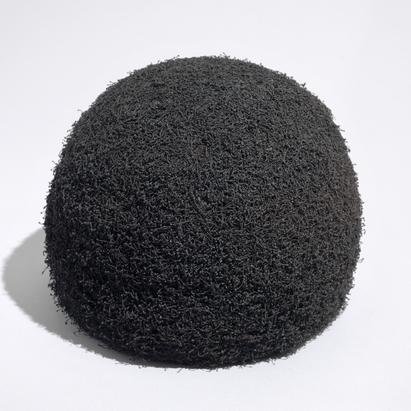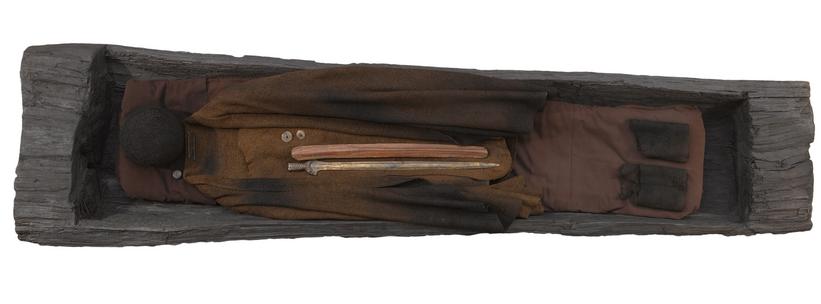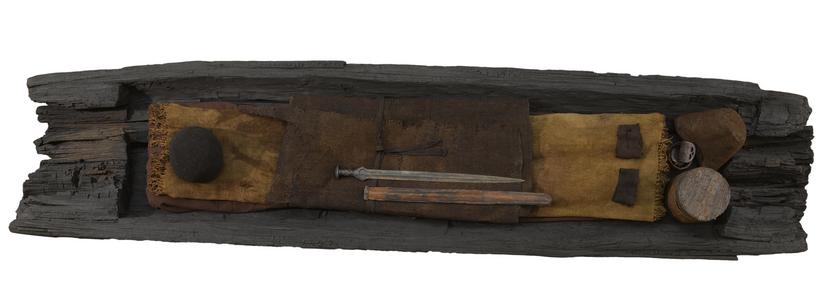Imitation fur hat
In the middle of the 14th Century BC two men were buried in their oak coffins. One was found in Trindhøj in South Jutland and the other in Muldbjerg in West Jutland. Their costumes are all made of fabric, but the clothing shapes are reminiscent of a time when clothes were made of fur.
The two rounded hats, lying in the coffins, are exceptional. They are both made of cloth. The thin threads that are sewn on give them a fur-like appearance. It would have taken a long time to make the hats, and such imitated fur hats were an important status symbol in the Bronze Age.
Real fur was used in the sword sheath belonging to the Trindhøj Man. The interior of the sheath was lined with fine animal fur. When the sword was sheathed, the soft fur protected the gleaming bronze sword from getting scratched.




